Discover 10 hidden attractions, cool sights, and unusual things to do in Concord (United States). Don't miss out on these must-see attractions: Don Francisco Galindo House, Concord Pavilion, and Port Chicago Naval Magazine National Memorial. Also, be sure to include Shiva Murugan Temple in your itinerary.
Below, you can find the list of the most amazing places you should visit in Concord (California).
Table of Contents
Don Francisco Galindo House
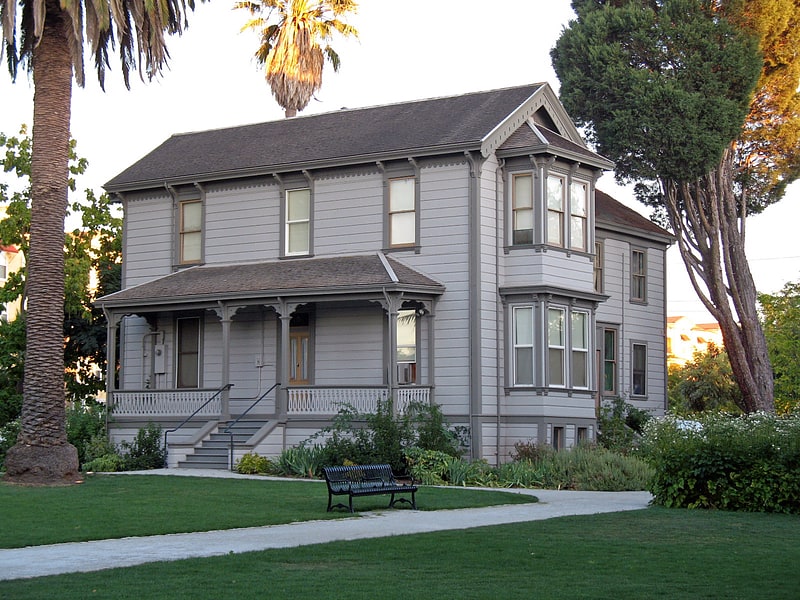
The Don Francisco Galindo House, known locally as the Galindo House and Gardens, is a 19th-century house in Concord, California built in 1856 by Francisco Galindo and his wife, Maria Dolores Manuela Galindo, daughter of Salvio Pacheco who was the grantee of Rancho Monte del Diablo.
The house is one of the few remaining Victorian ranch houses in Contra Costa County. In 1875 it underwent significant remodeling resulting in an enlarged basement, first floor and second floor. It was around this time that Francisco and Maria's oldest son, Juan "John" Galindo, and his bride, Marina "Sarah" (Amador) Galindo, moved into the house. After Juan and Marina's eldest child, Frederick, and Catherine (Hittman) Galindo were married in 1911, title was transferred to the next generation.
Following Catherine Galindo's death in 1966, the house was maintained by her children Harold, Ruth, and Leonora. Ruth Galindo, the last direct descendant of the family, resided in the home until her death in December 1999. With distribution of Ruth Galindo's estate, the house and its surrounding property of approximately 1.5 acres (6,100 m2) were deeded to the City of Concord to be preserved for public use as a house museum and park.
In October 2001, following a series of public workshops and meetings, the City of Concord adopted a Master Plan for the Galindo House, prepared by the historic preservation architectural firm Page & Turnbull of San Francisco, including a Museum Operating Plan.
In September 2010, ownership of the Galindo House and property transferred from the City of Concord to the Concord Historical Society, which spent the next two years renovating the house and opened it to the public in 2012.
In May 2013, the Society moved the city's Masonic Temple (which had been dedicated in October 1928) from its location at 1765 Galindo St. to the Galindo House property, facing Clayton Road, to become part of the Society's historical resource center and meeting facility.[1]
Address: 1721 Amador Ave, 94520-2506 Concord
Concord Pavilion
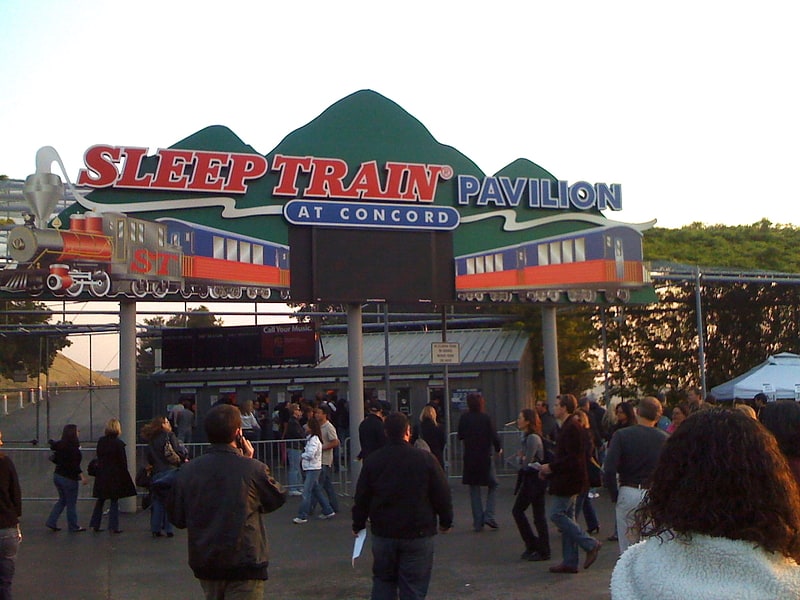
Amphitheatre in Concord, California. Concord Pavilion is an amphitheatre located in Concord, California. It is owned by the City of Concord and operated by Live Nation. The Pavilion has a capacity of 12,500 people and opened in 1975 as the Concord Pavilion. It is used for concerts, local community events and local high school graduations.
The Pavilion was designed by architect Frank Gehry and landscape architect Peter Walker. Gehry also designed its mid-1990s renovations, which included more parking and seats. The venue has hosted numerous professional musical acts over the years of its operation and continues to do so to this day. Bing Crosby played his last US concert at the Pavilion on August 16, 1977. Lawrence Welk's appearance at the Concord Pavilion on June 13, 1982, was billed as his farewell performance. Legendary concert promoter Bill Graham was killed in a 1991 helicopter crash after leaving a concert at the Pavilion by Huey Lewis and the News, having just discussed with the band about organizing a benefit for the victims of that year's fire in the Oakland Hills; Graham's production company, Bill Graham Presents (BGP), had been the booking agent for the Concord Pavilion since at least 1985.
In a deal with the city of Concord, Bill Graham Presents took over operations of the facility in February 2000. Shortly thereafter, its name was changed to the Chronicle Pavilion at Concord, following the purchase of the naming rights by the business agent of the San Francisco Chronicle, the San Francisco Newspaper Agency. BGP was purchased in 2000, along with its parent, SFX Promotions, by Clear Channel Communications; in 2005, Clear Channel would spin off its concert operations into Live Nation, which operates the Pavilion to this day.
The Pavilion changed its name in April 2006, when it became the Sleep Train Pavilion after the California-based mattress retailer (now a Houston, Texas-based company) purchased the naming rights; by 2017 the retailer folded into Mattress Firm.
In December 2013, as part of a 10-year contract renewal between Venue Nation (previously known as Live Nation) and the City of Concord, the Pavilion's name was changed again to the Concord Pavilion.
The First Battle of the Bands for high school, middle school, and elementary school students took place in 2006 and the winner was a high school band, Poster Boy.[2]
Address: Concord, 2000 Kirker Pass Rd, Concord, CA 94521-1642
Port Chicago Naval Magazine National Memorial

National memorial in Contra Costa County, California. The Port Chicago Naval Magazine National Memorial is a memorial dedicated in 1994 recognizing the dead of the Port Chicago disaster, and the critical role played by Port Chicago, California during World War II, in serving as the main facility for the Pacific Theater of Operations. The national memorial is located at the Concord Naval Weapons Station near Concord, California, in the United States.
The 1944 Port Chicago disaster occurred at the naval magazine and resulted in the largest domestic loss of life during World War II. 320 sailors and civilians were instantly killed on July 17, 1944, when the ships they were loading with ammunition and bombs exploded. The majority of the deaths were African American sailors working for the racially segregated military. The explosion and its aftermath led to the largest Naval mutiny in US history, and it and the subsequent trial became major catalysts for the United States Navy to desegregate following the war.[3]
Address: PO Box 280, Concord
Shiva Murugan Temple
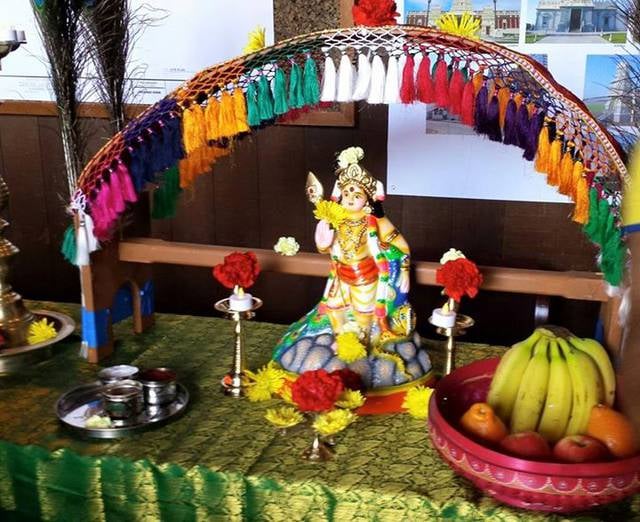
Temple
Address: 1803 2nd St, 94519-2623 Concord
William T. Hendrick House
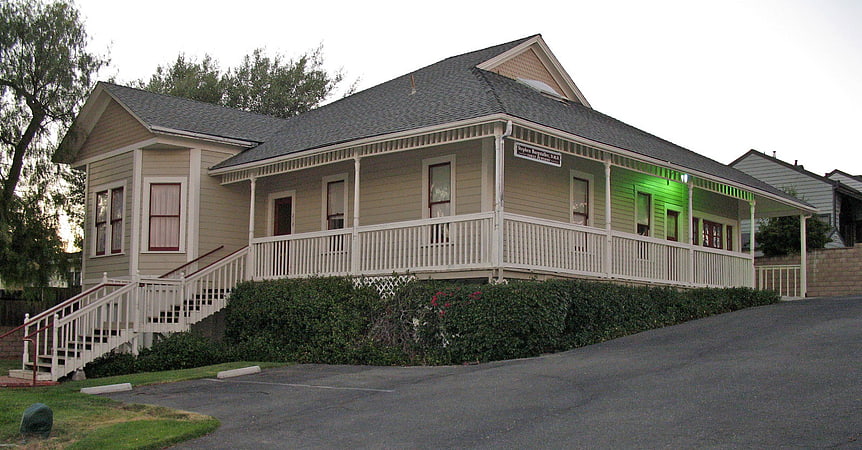
The William T. Hendricks House, at 218 Center Ave in Pacheco, California, is a one-story house upon a raised basement, built in 1857. It was listed on the National Register of Historic Places in 1983.
In 1857 William Hendrick purchased a tract of land from a Mr. Loucks and on it erected a dwelling house and a flour mill. This mill was the only flour mill ever operated in Contra Costa County.
The house as built in 1857 in Queen Anne style was a rectangle 20 by 40 feet (6.1 m × 12.2 m) in plan with a porch all around; a detached kitchen was behind. The house was expanded in the 1890s to the west with an addition having a slanted bay window on its front, bringing the plan to 42 by 40 feet (13 m × 12 m).
The raised basement has gained a door and three windows which were not part of the early house.[4]
Concord Pavilion
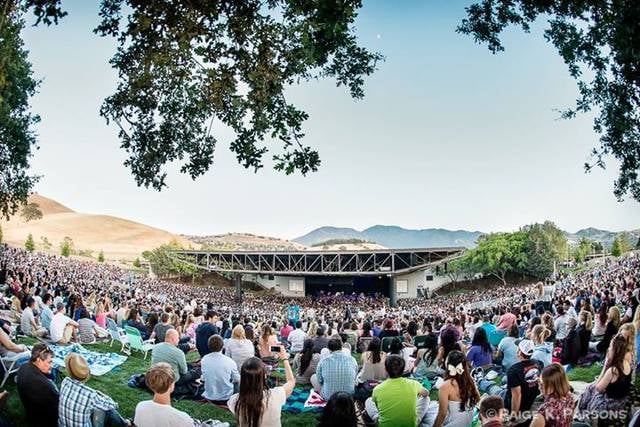
Theater, Concerts and shows, Music venue, Concert hall
Address: 2000 Kirker Pass Rd, 94521-1642 Concord
Salvio Pacheco Adobe
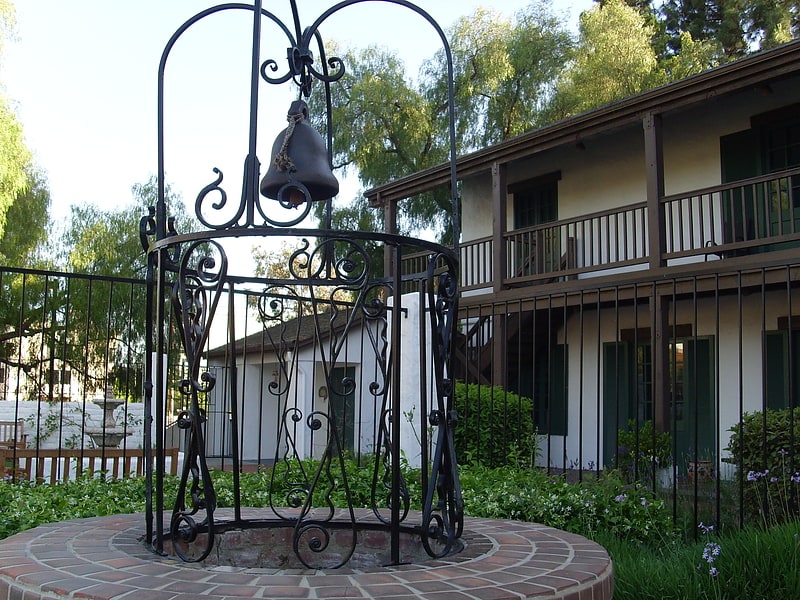
Historical landmark in Concord, California. The Salvio Pacheco Adobe is a historic adobe house in Concord, California. It was built in 1835 by Salvio Pacheco, a Californio ranchero with vast lands in Contra Costa.[5]
Fernando Pacheco Adobe
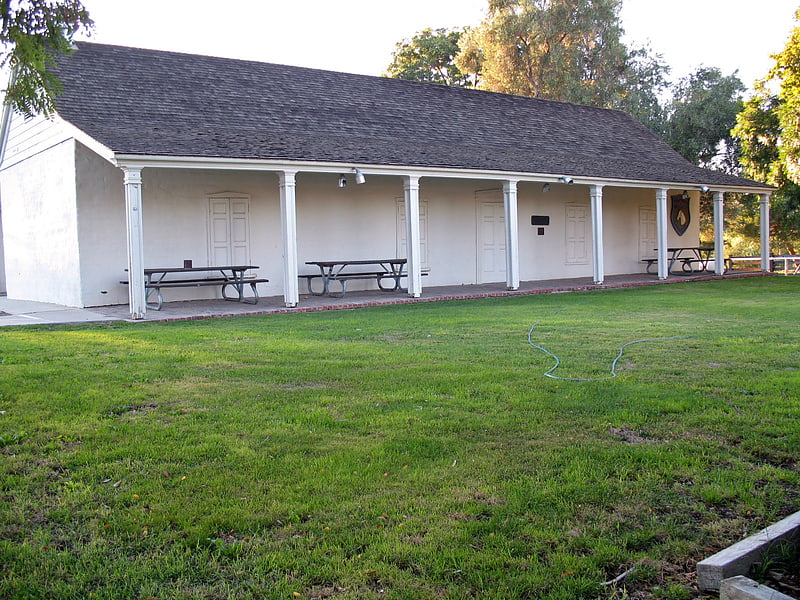
The Don Fernando Pacheco Adobe is located at 3119 Grant Street in Concord, California.The Fernando Pacheco Adobe is the only Concord landmark listed in all three Historical Registries: entry on the National Register occurred on June 6, 1980; the California Registered landmark number is 455; and the Concord Historical Landmark designation is 1-26-26/5458. The Adobe was built by Don Fernando in the early 1850s as the base of operations for his growing ranch activities, and as his family's formal residence. Fernando was the oldest son of Don Salvio Pacheco. He was born on May 30, 1818, while his father was assigned to a Militia-Guard unit at the Pueblo of San Jose. At age 17, he was sent to take possession and mark the boundaries of his father's 17,921 acre land grant. Fernando was given 1,500 acres as initial share of the rancho. He subsequently married Pasquala – a widow. Their six children: Pedro, Bonifacio, Cipriana, Maria Asuncion, Librada and Bersabe were raised at the Adobe. Don Fernando's family enjoyed a reputation as gracious hosts. They were famous for their generosity and extensive fiestas on Adobe's then lush, well irrigated grounds. The Adobe's 32” thick walls were built of local adobe – mud.
Ownership remained with Don Fernando's descendants until 1918. The land and adobe were then sold to the California Water Service Company; it then was essentially abandoned. In 1940 title to 2 and 1/2 acres and the deteriorated adobe structure transferred to Contra Cost County, which leased it to the Horsemen's Association. The Horsemen undertook a major rehabilitation, and used the then remote facility and corral for their headquarters. In 1979, the country transferred the Adobe and its grounds to its current owner, the City of Concord. In the early 1980s the Horsemen, the city, and the Concord Historical Society completed another restoration effort to stabilize the landmark Adobe. The Horsemen's Association continues activities on site. The Fernando Pacheco Adobe is located at 3119 Grant Street, now well within the city limits. It is adjacent to Hillcrest Park and the De Anza Expedition Memorial marker.[6]
Diablo Valley College
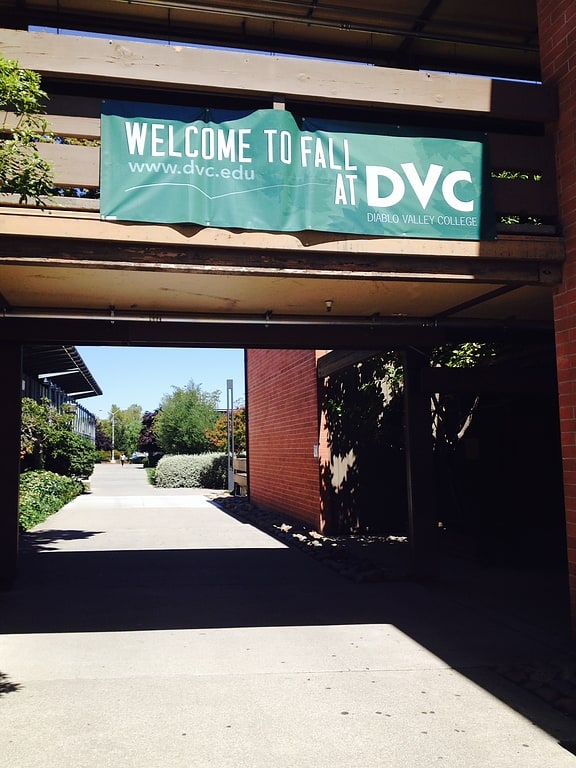
Community college in Pleasant Hill, California. Diablo Valley College is a public community college with campuses in Pleasant Hill and San Ramon in Contra Costa County, California. DVC is one of three public community colleges in the Contra Costa Community College District. It opened in 1949. DVC has more than 22,000 students and 300 full-time and 370 part-time instructors.[7]
Address: 321 Golf Club Rd, Concord
California Grand Casino
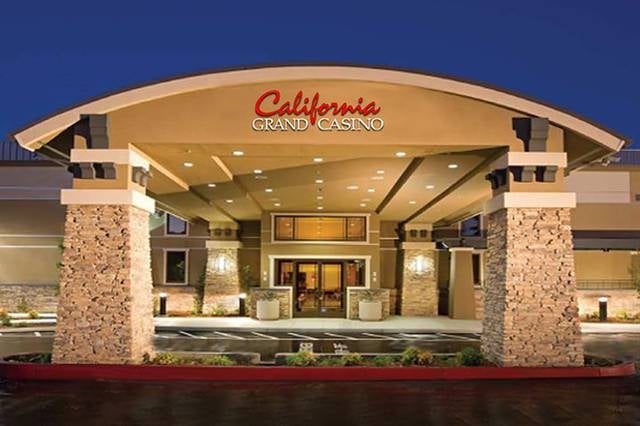
Nightlife, Gambling, Casino
Address: 5988 Pacheco Blvd, 94553-5608 Pacheco